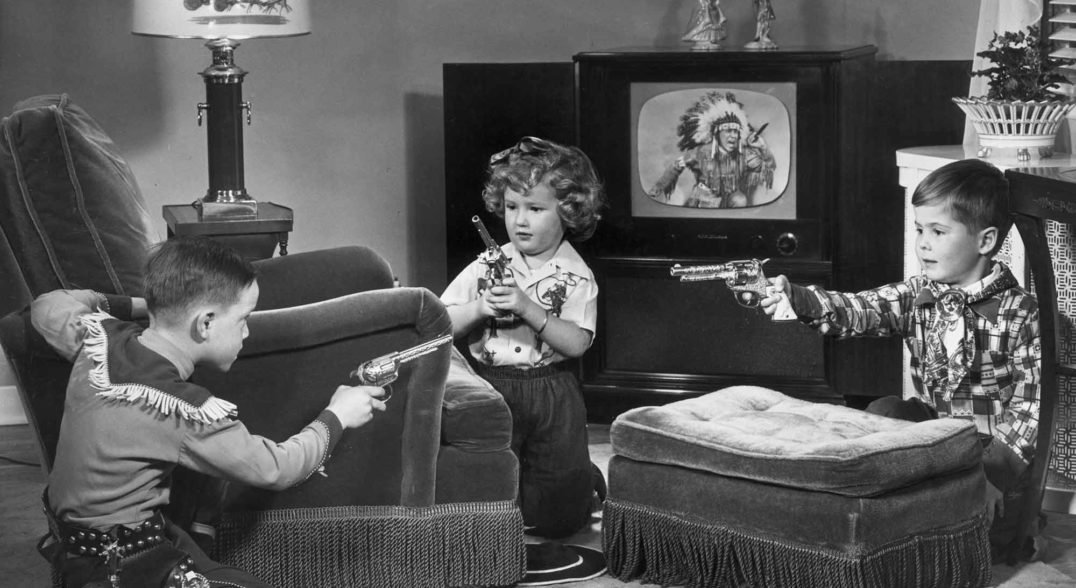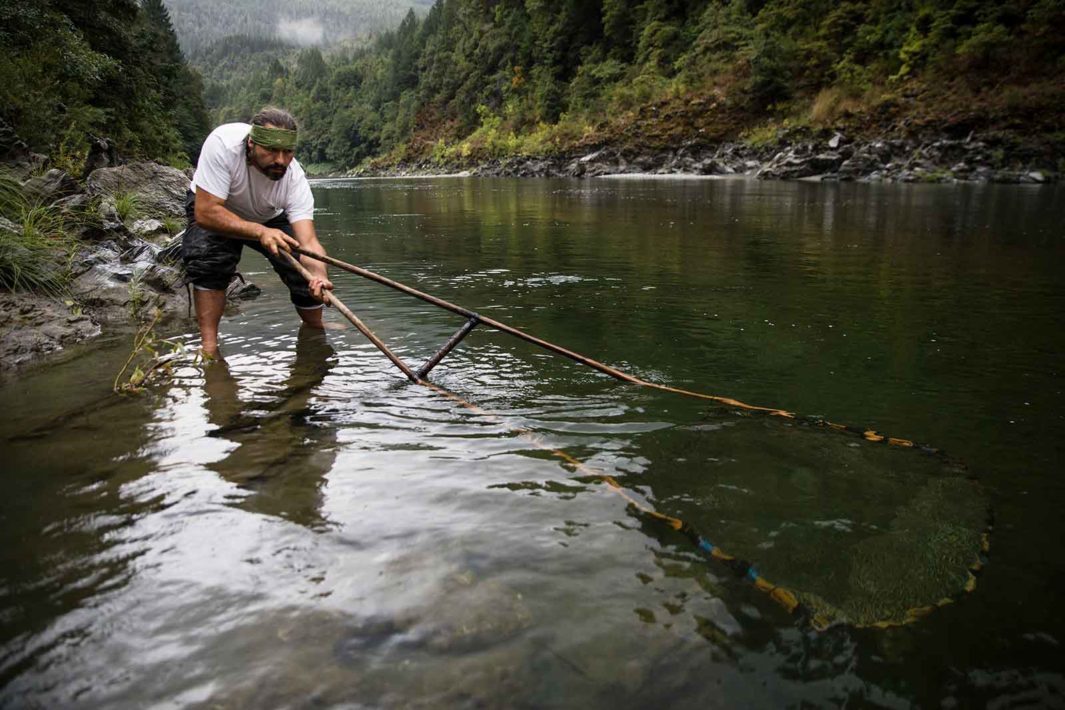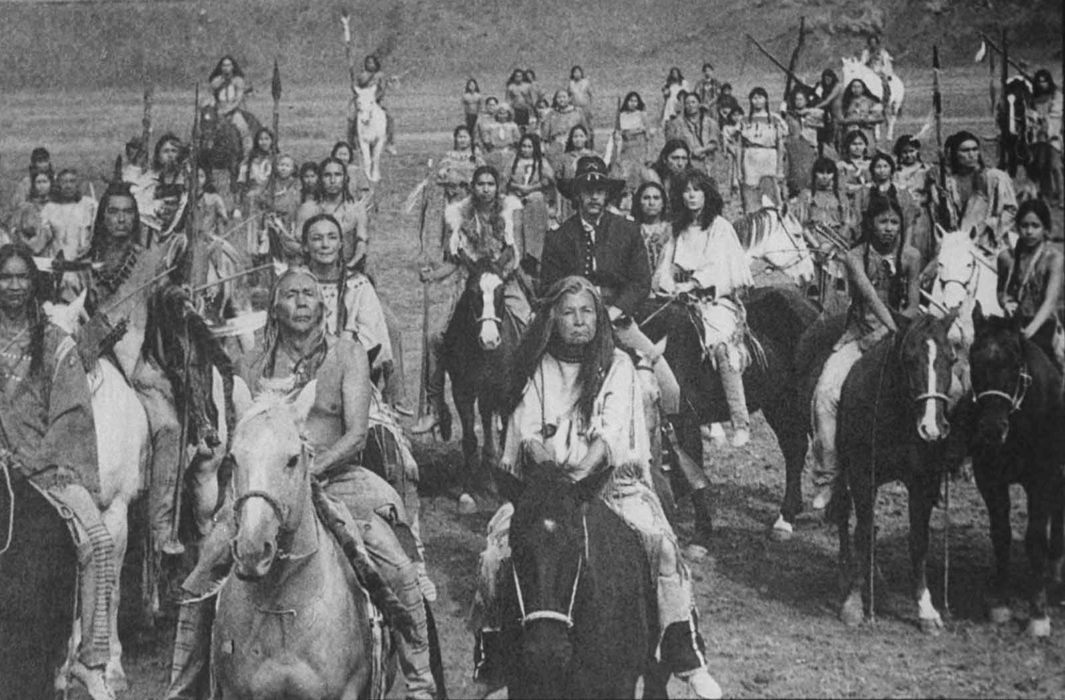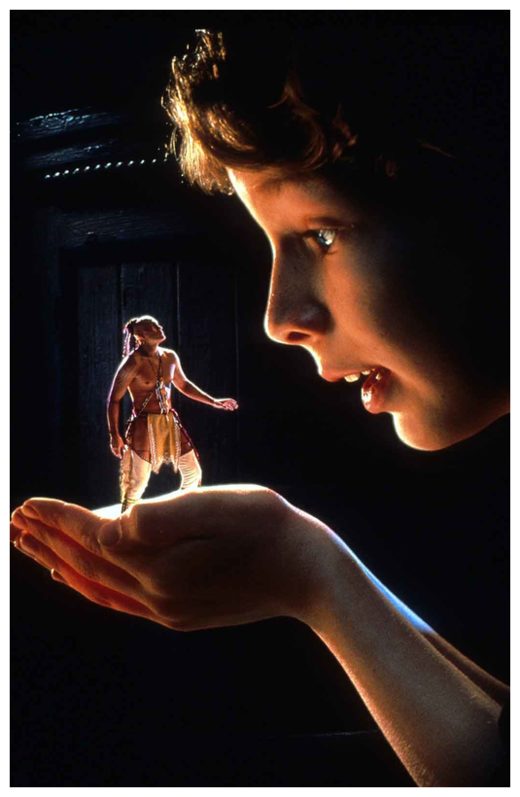
Such characterizations, it turns out, are rife-and not just in older, "classic" works that might be explicable as products of their time. They are evident in television and literature modern enough to have fed the brains of people now parenting children of their own.
As a person of Indigenous heritage, a Native American media scholar, and an avid (almost worryingly avid) fan of all things pop culture, I've seen a range of representations of Indigenous people on TV shows and in books. In graduate school, I decided to turn a more academic lens on the situation. I analyzed approximately 60 popular TV shows, films, and books from the early 1990s to 2011-ones that were set in modern times or had contemporary elements, as opposed to works of historical fiction. My goal was to find out what impression the average non-Native consumer would have of today's Native Americans from the media they grew up with.
What I found was a heavy dose of stereotypes, with-perhaps surprisingly-little sign of improvement over the decades. While some of the details changed, the overall picture was a harsh split between "good" and "bad" Indigenous characters. The negatively portrayed Indigenous characters were generally out of touch with their culture; they also often received benefits, operated casinos, were untrustworthy, and were frequently suggested to be "fake" Native Americans (especially in the eastern half of the country, where lineage is more likely to be "mixed"). Meanwhile, the more positively portrayed Indigenous characters were poor, living on reservations, honest, culturally knowledgeable, and often involved in supernatural occurrences.
The implication was that "real" Indigenous people must be impoverished, helpful to outsiders, and totally immersed in traditional Indigenous culture.

Sadly, I saw no indication that these stereotypes shifted much over my study period, particularly in television. However, in more recent years, the media landscape seems to be getting broader, allowing for other worldviews to seep in.
The emphasis on "bad" and "good" Indigenous characters has a long history in American media. Most often in westerns and historical dramas, especially prior to the 1960s, the "bad" Indigenous characters were depicted as secretive or unwilling to assist Euro-American characters, while the "good" ones led Euro-American protagonists to gold, free land, help for their injuries, spiritual enlightenment, or anything else they needed or wanted. These tropes are sometimes referred to as the "savage" versus the "noble savage."
In the 1970s to early 1980s television series Little House on the Prairie, set in the late 19th-century American Midwest, we watch a Native Osage man argue against killing illegal Euro-American squatters in Indian Territory-to which settler Pa Ingalls shouts, "That's one good Indian!" Meanwhile, other Indigenous people are described as roaming over the land "like wild animals." As Osage journalist Dennis McAuliffe Jr. talks about in his writings on Little House on the Prairie, the kindness of the Osage man is not returned. To be considered "good" characters, Native Americans are expected to consistently and happily put the colonists' needs above those of their own community; any behavior outside of this, even nonviolent protest, is usually portrayed as "evil," "savage," or "backward." As Pa Ingalls later says, "When settlers come into a country, the Indians have to move on."
These two opposing Indigenous types can still be seen decades later. In the 1990 blockbuster film Dances With Wolves, situated on the American frontier, audiences fear the Pawnee warriors who attacked settlers but cheer for the Lakota Sioux, who adopted and raised a white girl and took in white Lt. John Dunbar, the hero of the film. In the 1992 hit movie The Last of the Mohicans, the antagonist is a Native who attacks a group of British soldiers-while we root for the Indigenous men who risk their lives to protect the British women accompanying those white soldiers.
While it's important to honor Indigenous characters who attempt to build bridges toward peace, one wonders why there is not an equal mainstream fascination for Indigenous characters who assert the rights of their own people. Furthermore, it seems that Indigenous characters are often doomed to die even if they have been kind and helpful. Dunbar survives his predicament, but we're told that his Lakota Sioux friends do not. And The Last of the Mohicans is a self-explanatory title (in spite of the fact that the Mohicans do indeed still exist, as the Stockbridge-Munsee Community).

The contrast is even more glaring in the 1994 film Squanto: A Warrior's Tale, starring a young Adam Beach (a Canadian actor and member of the Saulteaux First Nations). Having experienced both unkind and caring Europeans, Squanto decides to assist the Pilgrims, while another even more mistreated Native character, Epenow, wants to attack them. Epenow is clearly the villain, Squanto the hero, and the film ends with a depiction of a Thanksgiving meal celebrating the exchange between Squanto and the Pilgrims. History proves that Epenow's suspicions in the film may be valid, even if his aggression is not: Viewers may be aware that it would only be a few decades before the Pilgrims began to systematically appropriate land and livestock from their Indigenous neighbors, deny them legal rights in court, and possibly even poison the son and heir of the Wampanoag chief who had initially welcomed them.
Some children's films, including The Indian in the Cupboard (1995) and The Legend of Tillamook's Gold (2006), feature a Native American character who serves as a mystical guide to a non-Native child. Just as the "positive" Indigenous characters in other films give food and assistance to Euro-American colonists, these characters freely hand over even the most sacred aspects of their culture to Euro-American children, having only known them for a few hours. In Tillamook's Gold, for instance, a Native American elder tells a young girl, "In our way, when a girl is your age, the medicine man asks her to go on a quest ... a vision quest to find her power." She proceeds to go on a vision quest, with the ultimate goal of finding buried treasure to become wealthy.

There are some brighter spots in the media landscape. Fortunately, some children's books and comics have featured more complex Indigenous characters and more equitable cross-cultural friendships. The 1970s brought us works like Arrow to the Sun (1974) by Gerald McDermott and The Girl Who Loved Wild Horses (1978) by Paul Goble, authors who began telling more culturally informed Indigenous stories and at that time argued for more Indigenous authors. Since then, Indigenous people themselves have begun authoring a wide variety of children's books.
More recently, although some Indigenous viewers found fault with a few aspects of Disney's 2016 animated film Moana and its marketing campaign (including the sale of Maui costumes, which could be considered blasphemous), many Polynesian people felt that it faithfully presented their culture and was, overall, a strong representation of Indigenous people-particularly in the way it portrayed Moana and her grandmother as resilient, independent women. The use of Indigenous writers and voice actors for the film was also taken as a good sign for future collaborations.
Many people born in the 1970s and 1980s have fond memories of works that they grew up on and want to share them with their own children-only to stumble, often with surprise, upon what in today's landscape translates to notes of blatant racism. When you come across such stereotypes in media as a parent or a viewer, your first step should be to make a conscious decision about whether this is the type of media with which you want to engage. If the portrayal is egregiously offensive, skip it entirely. Or, use less problematic pieces to start a conversation.
When you sit down to watch Little House on the Prairie with your child and find yourself struggling with derogatory remarks about Native Americans stealing food and killing pioneers, use them as a talking point. Did all Native Americans act this way, and if not, why didn't the series include them? If Native Americans were stealing food, why did they have to do that, since they were obviously able to feed themselves before pioneers arrived? Do some research, alongside your children or other family members. Finally, consider the effects these stories have on us today and on the people who read them at the time they were first published.
Notable Indigenous Children's Book AuthorsThese are difficult conversations to have, but they can be adapted to suit a child's age. No one would advocate telling a 5-year-old about the full horrors of Christopher Columbus' attack on Indigenous people, but a 5-year-old can understand that people were taken from their homes, had to work for people who were mean to them, and weren't paid or able to leave. Such discussions are a basic exercise in empathy.
Sherman Alexie (Spokane/Coeur d'Alene)
Joseph Bruchac (Abenaki)
Deborah Duvall (Cherokee)
Louise Erdrich (Ojibwe)
Joy Harjo (Mvskoke)
S.D. Nelson (Standing Rock Sioux)
Cynthia Leitich Smith (Muscogee Creek)
Virginia Driving Hawk Sneve (Rosebud Sioux)
Tim Tingle (Choctaw)
Richard Van Camp (Tlicho Nation)
Jan Bourdeau Waboose (Ojibwe)
See also the many artists producing comics for a variety of ages at:
Native Realities
A final, crucial step to being a responsible media consumer is to look for works made by Indigenous artists or in collaboration with Indigenous artists. (Note that you cannot tell if an author is Indigenous by their name alone.) In Canada, the Aboriginal Peoples Television Network plays shows for both adults and children; a few standouts for children are Raven Tales, Wapos Bay, Amy's Mythic Mornings, and Anaana's Tent, some of which have episodes available online. SkinsPlex, a free online site dedicated to Indigenous-created media, has short and feature-length films. Many Indigenous people have and are contributing to children's literature (see sidebar).
Other promising stories have emerged from collaborations between Natives and non-Natives, and from writers who take the time to familiarize themselves with Indigenous issues. A heartening example comes from The X-Files show from the 1990s. Creator Chris Carter finished season 2 on a cliffhanger and had placed the final episode in Navajo/Diné territory. One Navajo character was seen carrying a body, which is a cultural taboo-and several Navajo people let Carter know this. Rather than ignore their complaints or become defensive, he met with Indigenous people and shaped the opening episodes of season 3 around their advice. The product was a clever demonstration of the power of oral tradition: Traditional storytelling practices save the lives of main characters Scully and Mulder after all physical records of their investigation have been destroyed. The episode arc stays rooted in X-Files drama but is a nice, knowledgeable tip of the hat to Indigenous traditions.
I often think back to how my parents navigated the TV shows, movies, and even classroom lessons that frequently give an unbalanced and negative view of Indigenous people. Rather than feel pressure to act as complete encyclopedias, their focus was to make being of Indigenous ancestry something I was proud of, and grateful for, assuming that this would prompt me to learn more about both my ancestry and other Indigenous people. My mother enjoys pointing out that I did, after all, go on to focus my master's thesis on Native American issues. It seems like her job was done well.
Virginia McLaurin is a Ph.D. candidate in cultural anthropology at the University of Massachusetts, Amherst.



Reader Comments
@sbc:
Prisons are not good places in which to live, or to 'make love'.
Only the real evil belong in them.
But those are, sadly, the only ones who are not in prison at the present time.
ned,
out
@sbc:
I understand your point of view. I realize what you are saying and its veracity.
At the same time, the 'Indians' (of the past) were violently mistreated.
This mistreatment is not something that will go away. And it exists in the 'Indians' of the present. It is like a poisonous cloud.
That is the problem when anyone of one grouping subjects another grouping to a violence that is far in excess of what might be 'justified'.
There is one type of law and then there is another kind of law, entirely.
Modern humans know almost nothing of this 'second' law.
LOOK AT MY COMMENT BELOW.
ned,
out
overthrow the American way of life and move towards 3rd world socialism.
The democrats are a threat to the Americans and need to be stopped before we are ALL on reservations.
Carlin said you know why they call it the american dream? Because you have to be asleep to believe it.
And you sir are almost dead asleep. Stay asleep you shill.
F you and the podium you stand on. You regularly express violent emotions against people who go against your ayn rand idealism. Well guess what , she lived on welfare because her idea didn't work just like your brain doesn't work.
People who live as individuals, as loving partnerships, as families and as communities, generally act pretty well toward one another.
Certainly, there are upsets and tantrums, and some skirmishes, but these are overcome, because of the general mood, which is fairness.
Only when people are made hyper-educated, hyper-regulated and hyper-technologized does life become WAR.
This is why I constantly rail against organization. Any organization that EXCEEDS the boundaries of individual(s), loving partnerships, families and communities is inherently evil, creating imbalance (violence) where balance (peace) once largely stood.
What color (prejudice) is your money?
ned,
out
The indigenous tribes were in a state of constant war with each other.
They were brutal in their warfare, and often tortured and enslaved the losers of these conflicts.
Just read some of the first hand accounts by actual early explorers.
The sad truth is that the dominant tribe eventually won these wars due to superior weapons and organization and pathogenic bacteria, for which the natives had no defense.
And that tribe was the European settlers.
They are humans as we are. And the denser they used to live to each other, the more conflicts, and the more brutal and ruthless. Just like in Europe, for example...
I did not like this article.
It replaces one type of subjugation and stereotype, with another type of subjugation and stereotype.
A modern update, of the same old thinking, if you will.
There were no doubt some tribes that were more territorial than others. I have heard this. I don't believe any of them attempted to conquer the whole fucking North American continent, however.
Some of the so-called 'actual early explorers' may too, have been subjected to violence by said Indians because said Indians heard about other even earlier actual explorers from other Indians....further east
There is also much record of trappers and mountaineers co-existing peacefully with the various tribes.
ned,
OUT
Now of course we still kill native peoples and formerly colonized peoples around the world while we steal everything that isn't nailed down, but we have very different rationales. Now we invade, bomb and murder you because it is our duty to do so - you know - "duty to protect," or because we couldn't live with ourselves if we didn't kill you because you're being so mistreated by your own leader - "humanitarian intervention." In other words, now we kill you and steal everything that isn't nailed down "because we love you!"
I refer to these colonial and now neo-colonial genocidal realities as comprising what I like to call: "the myth of the noble white man."
Stereotypes are found in every culture, as I discovered in my Hopi friends, and Mexican in-laws growing up. Later I saw it just as prevalent among Europeans as I did Asians in my business travels. My father felt the Mexicans he knew were decent people, despite losing all his property and investment cash in a business venture in Mexico to fraud and incompetence. I saw my Hopi friends as honest and honorable people, while the Mexican youth I grew up with as cutthroat, opportunistic shysters. I trusted very few of the people my father associated with. In Taiwan, I made amiable friends, yet in business matters we kept a very close watch on their behavior and never turned our backs. In Norway, I made great friendships, but was completely dismayed by their cultural prejudices and political naiveté. Often I wondered how that people could have been part of my origins. The same for the British.
My 4th gr-grandfather, an immigrant from Sweden, participated in the Blackhawk war, and yet he had a native companion during the conflict. Though he escaped any serious harm the 4th gr grandfather on the other side barely escaped scalping and murder by local natives. There are a number of family history stories of my wife's and my own ancestors either barely escaping death, or ending up missing due to conflicts of this type.
As a child, I was taken by the stereotype of The Lone Ranger, but even then I was disgusted with how Tonto was treated by the masked man as well as the locals. Even the name (Tonto = silly/foolish in Spanish) struck me as demeaning. It wasn't long before I ran into stereotypes and prejudice in DC and Marvel comics.
Part of maturation is recognizing why stereotypes exist, while constraining their influence. My wife, despite her degree in Sociology, still has trouble with the utility of stereotypes and categorization. I figure I have my plate full with my own sins to get up in arms about the wrongs done to my ancestors, or to our indigenous neighbors.
There's a hell of a lot more important things to sit down and tell / explain to your child / oneself then the portrayal of indigenous populations ... it boils down to four words - "Never Believe The Narrative"
George from [Link]
overthrow the American way of life and move towards 3rd world socialism.
The democrats are a threat to the Americans and need to be stopped before we are ALL on reservations.
"Lies My Teacher Told Me: Everything Your American History Textbook Got Wrong" by James W. Loewen, a sociologist. It critically examines twelve popular American high school history textbooks against actual documented historical accounts with regard to a few select significant events in American history.
It reads well and has a lot of examples of various history that did not get told and is not known - both positive and negative. Also shows the way society operates in ways that are more nuanced than 'evil bastards' theory.